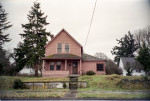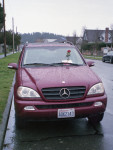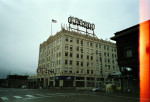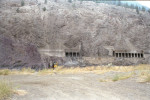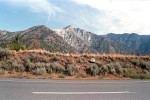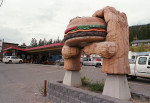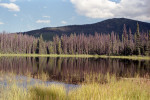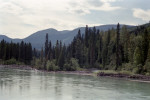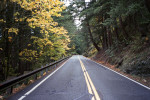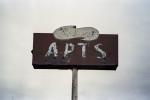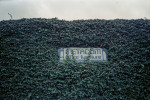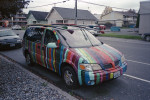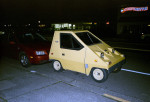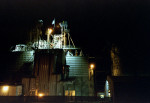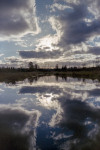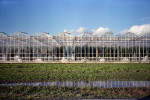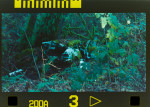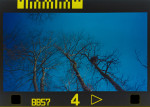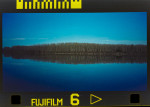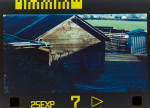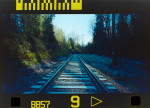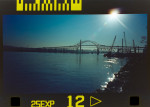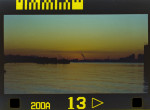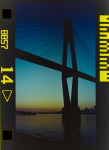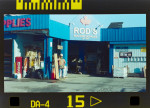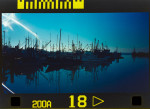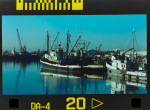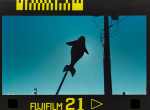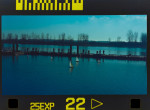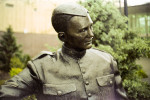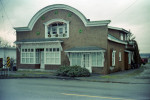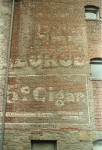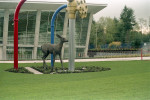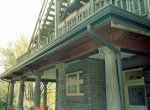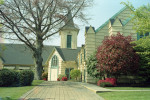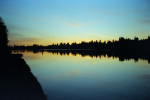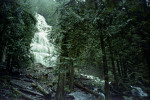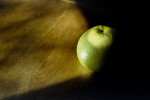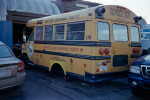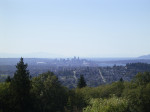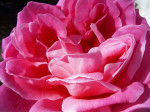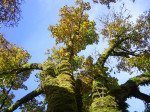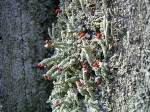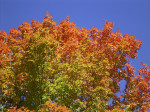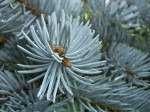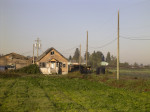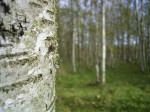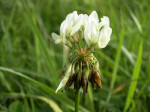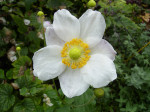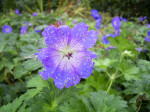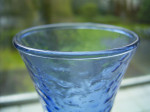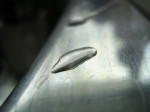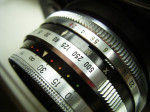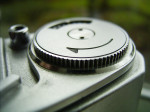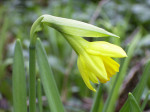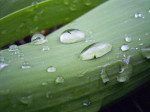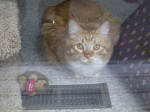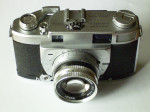Oct
19
2016
 It’s film cameras like this that produced the dreadful images that put many people off photography or drove them to buy expensive terrible early digital cameras. The notion of having a lens that covers 38-170mm sounds good but there are a few reasons that it isn’t. The maximum aperture of the lens is f5.6 at the wide end and f12.8 at the telephoto end, neither gathers much light. Couple that with the fact the maximum shutter speed was a paltry 1/250 second and its almost a guarantee that blurry images were going to result. But lets say you use some good technique and you do manage to get a blur free image there is still the fact that there is a boat load of chromatic aberrations (ie colour fringing) you’ll be waist deep in vignetting and only the center of the image is sharp. And by sharp I mean butter knife sharp not tack sharp. So why bother using this camera 15 years later? Good question, I suppose I too was lured in with the promise of a 4.5x zoom, thinking won’t that be fun, it wasn’t. So if you see one of these languishing in a thrift store bin its better to walk away and save your film for a more worthy camera. It’s hard to believe but there are a few 35mm film point and shoot cameras that attempted even longer telephoto zoom maybe I should try them.
It’s film cameras like this that produced the dreadful images that put many people off photography or drove them to buy expensive terrible early digital cameras. The notion of having a lens that covers 38-170mm sounds good but there are a few reasons that it isn’t. The maximum aperture of the lens is f5.6 at the wide end and f12.8 at the telephoto end, neither gathers much light. Couple that with the fact the maximum shutter speed was a paltry 1/250 second and its almost a guarantee that blurry images were going to result. But lets say you use some good technique and you do manage to get a blur free image there is still the fact that there is a boat load of chromatic aberrations (ie colour fringing) you’ll be waist deep in vignetting and only the center of the image is sharp. And by sharp I mean butter knife sharp not tack sharp. So why bother using this camera 15 years later? Good question, I suppose I too was lured in with the promise of a 4.5x zoom, thinking won’t that be fun, it wasn’t. So if you see one of these languishing in a thrift store bin its better to walk away and save your film for a more worthy camera. It’s hard to believe but there are a few 35mm film point and shoot cameras that attempted even longer telephoto zoom maybe I should try them.
no comments | posted in Cameras, Photography
Oct
14
2016
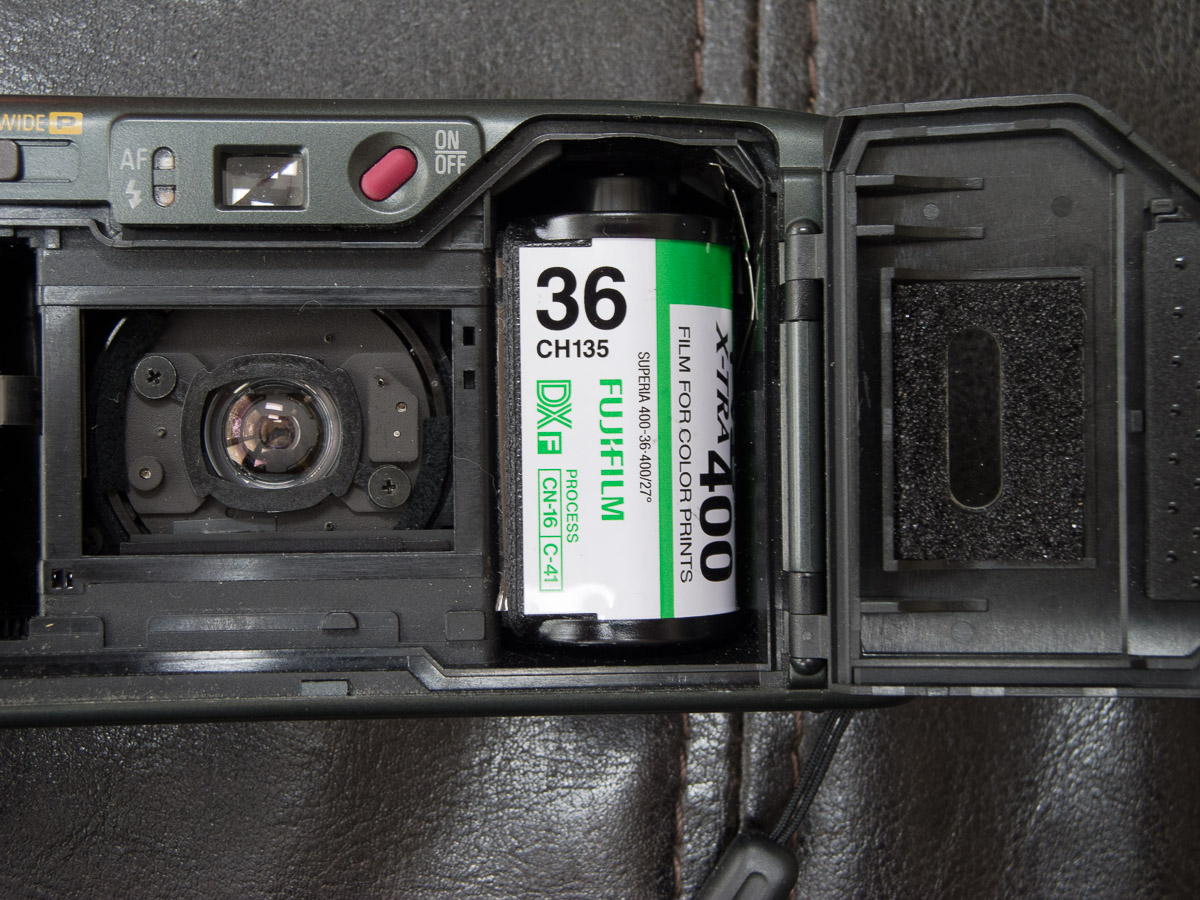
I seem to attract light leaks with cameras like ants to a picnic or mosquitos to the one spot you missed with the repelant. All very annoying. I’ve been using my Ricoh R1 for a few years now without any issues and have been very pleased with it. Ricoh R1 with Color Implosion Ricoh R1 great camera design
Ricoh R1 in Niagara but then this happened.
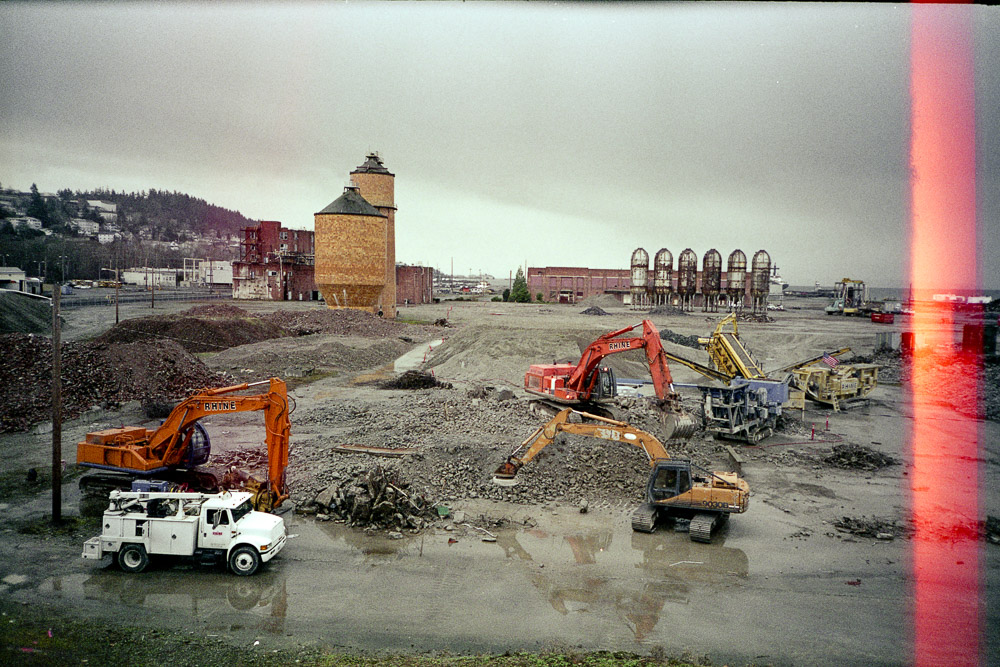
There are some clues in the leak: It repeats on every frame, it is near the edge, it is a narrow strip. This all points to the light seal around the film canister window.
Taking a close look at the seal I could see that it had begun to deteriorate. I decided to look for a donor camera that would fit the bill. It isn’t until you nead something that you realize how hard it is to find. The variety of shapes and sizes for the seal material was unexpected not to mention the different textures and methods of adhesion. Not finding a perfect match I decided rather than doing the sensible thing and just blacking out the film window I would deprive a cheap camera of its seal despite its poor fit. A little extra strip of foam shouldn’t hurt either.
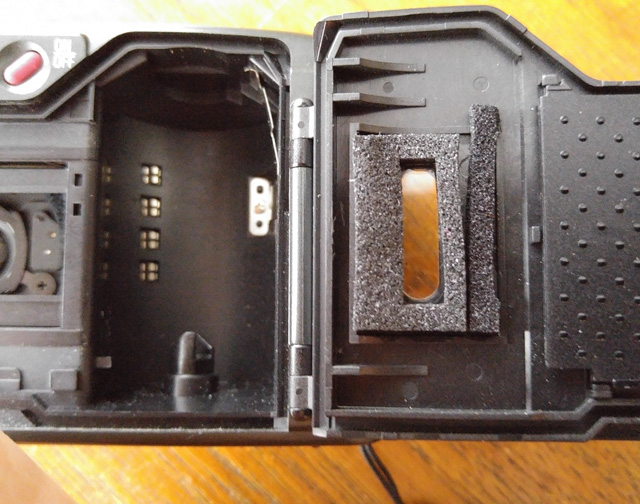
As you look at this you may be thinking well that looks unprofessional to which I would reply ‘It’s inside the camera and it does the job’
Here is the proof
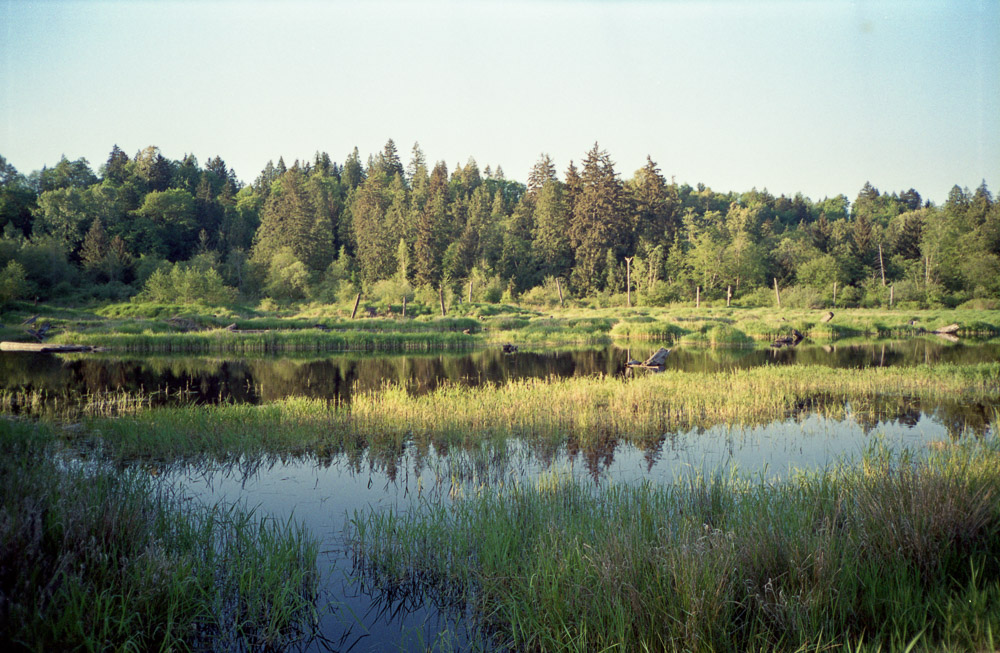
And here are a few images from before the seal transplant.
3 comments | posted in Cameras, Photography, Uncategorized
Oct
2
2016

The MZ6 is a great little SLR that I have written about many times so I wont repeat myself here but I will post 30 random pictures taken using it with two rolls of either Kodak 400 or Fujicolor 200
no comments | posted in Cameras, Photography
Sep
21
2016
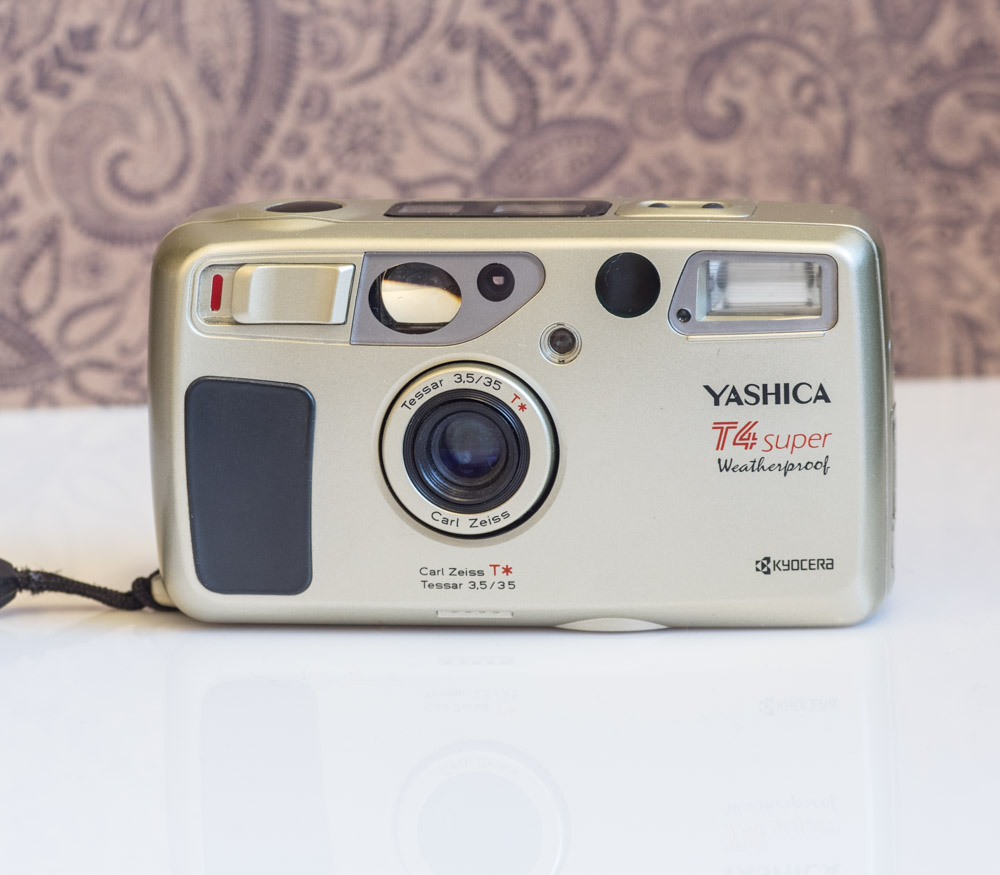
What can I really add that I haven’t already said about the Yashica T4 Super? http://wkoopmans.ca/notebook/?s=Yashica+T4
Perhaps not much, if I was to summarize all my posts it is a very good point and shoot camera.
One thing about one camera: The Yashica T4 Super has a top shutter speed of 1/700 of a second and the flash can synchronize at that speed. This is one of the reasons that this camera is very good at fill flash.
no comments | posted in Cameras, Photography
Sep
4
2016
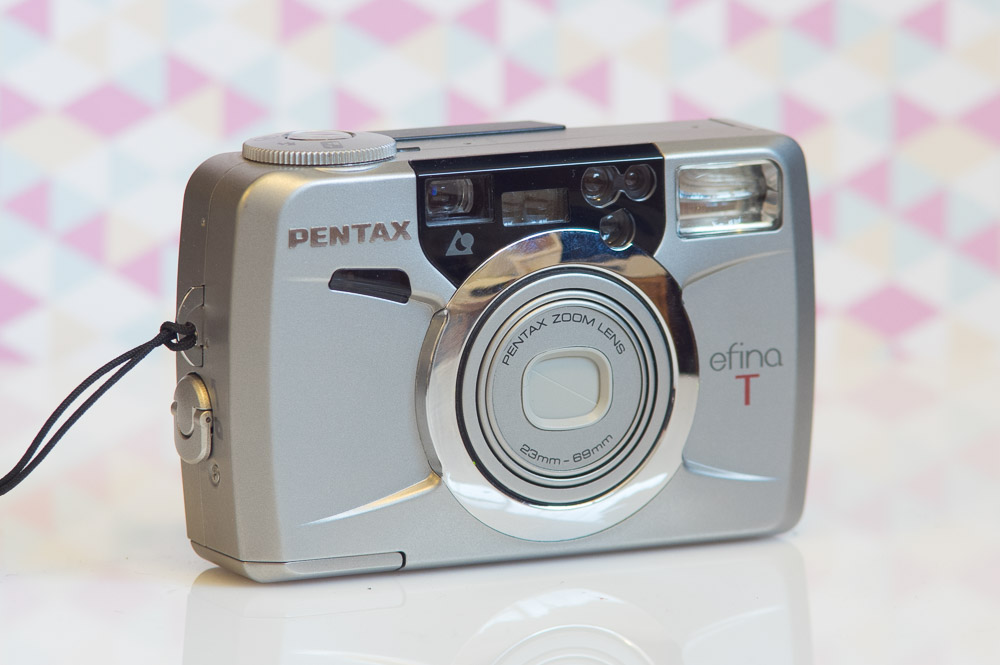
The Pentax efinaT is with out a doubt my favorite APS film camera. I’ve posted previously about its robustness here Pentax EfinaT
It’s just one of those cameras that seems like the peak of its type, its type being a small camera with a film format doomed for failure before it ever started of course. 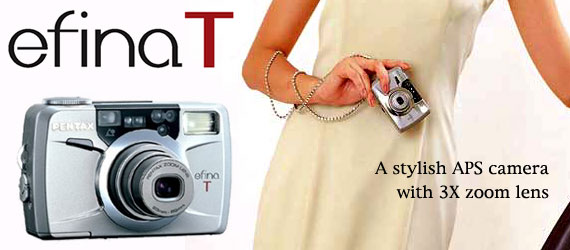
It’s 23-69mm lens gives a similar field of view as a 29-87mm lens on a 35mm film camera a very nice focal range and with the wide 16:9 aspect ratio its a fun camera to compose images with. The lens is a slow f5.6 to 9.9 comprised of 6 elements in 5 groups with two of them being aspherical. The slow speed of the lens shouldn’t be a surprise considering the compactness of it. The camera does weigh a hefty 195g due to its metal build. Interestingly it has a 5 point autofocus system and can also be set to spot focus. The close focus distance of 65cm can be used at any of the zoom settings.
I didn’t scan the film, I photographed it with my Pentax K-3 setup 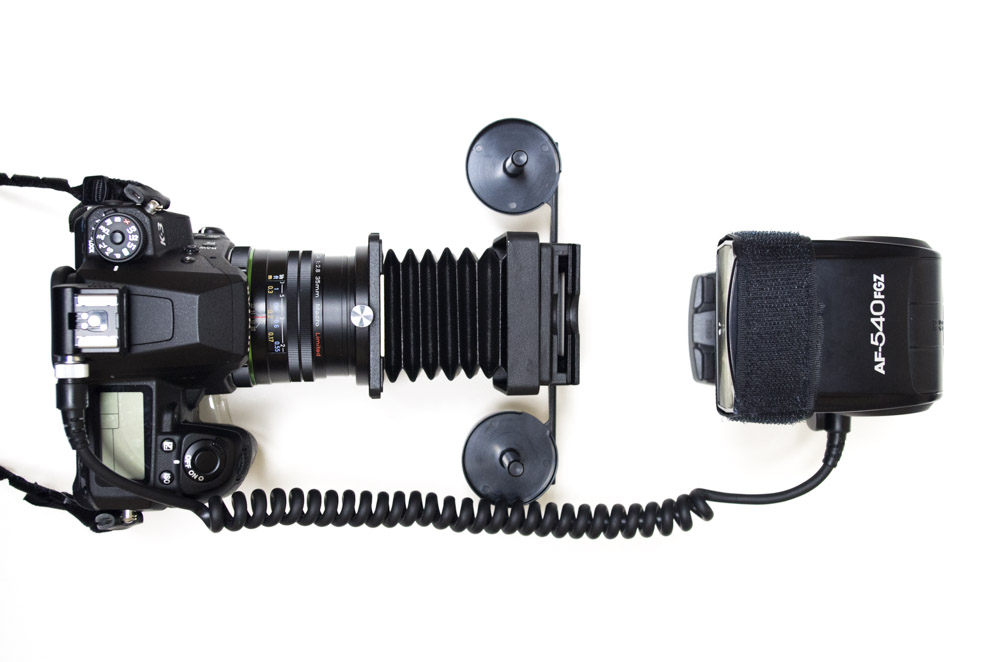
and then cropped and adjusted it in Lightroom. I also decided to leave the full area of the film visible just for the sake of it and so you can see the true image size captured.
The film itself is 24mm wide but the image area captured is only 16.7mm along that edge and 30mm along its length. It results in an image area 58% smaller than that of 35mmm film although it’s no less fun.
1 comment | posted in Cameras, Photography, Uncategorized
Aug
14
2016

Every so often I try out a camera that results in an epic fail, this Ranger 35 meets and exceeds that. Its a cute little camera with all kinds of design touches and markings.

It is the sort of cheap camera I expect you could once have ordered from the back of a comic book. The shutter nominally provides 1/25,1/50,1/100,1/200 of a second as well as bulb and the aperture ranges from f3.5 to f16. The focusing is strictly via zone and unfortunately my camera doesn’t appear to be anywhere near accurate. Out of a roll of 24 images I think there is one that I would deem to be completely in focus and that must have been accidental. So its more an object to look at than a camera to produce anything worth seeing.
no comments | posted in Cameras, Photography
Aug
8
2016

There are certain cameras that are things of beauty and some that are functional and the Voigtlander Vitessa is all that and more. The most unique attributes of this camera are the way the lens pops out of the barn doors like a cuckoo clock’s bird and the film advance plunger. The plunger not only advances the film it also sets the shutter so you are ready to go for your next exposure. The rangefinder focusing is done with a rear thumbwheel much like the Fujica 35 SE an arrangement that I feel is better than turning the front of the lens as is done with most other rangefinders. The lens itself is a very good 50mm f2.0 Ultron with 6 elements. I found it to be plenty sharp and to create gratifying images.
Every aspect of the camera is well made making it a pleasure to look at and use.
no comments | posted in Cameras, Photography
Jul
29
2016

I discovered that an Olympus Stylus Epic that I used had a light leak. That’s bad but the other problem was I have two nearly identical Epics and I don’t know which one it was.

The leak appears at the bottom of each frame. The detail shown in the image above being the most obvious example. Because the image on the film is created upside down it means that the leak itself is coming from the top. I looked at both cameras carefully but couldn’t see any obvious source. However there is a rubber seal on Epics that could have been slightly askew. So then I ran a roll of 8 exposure film I happened to have through the one that was the least likely culprit.
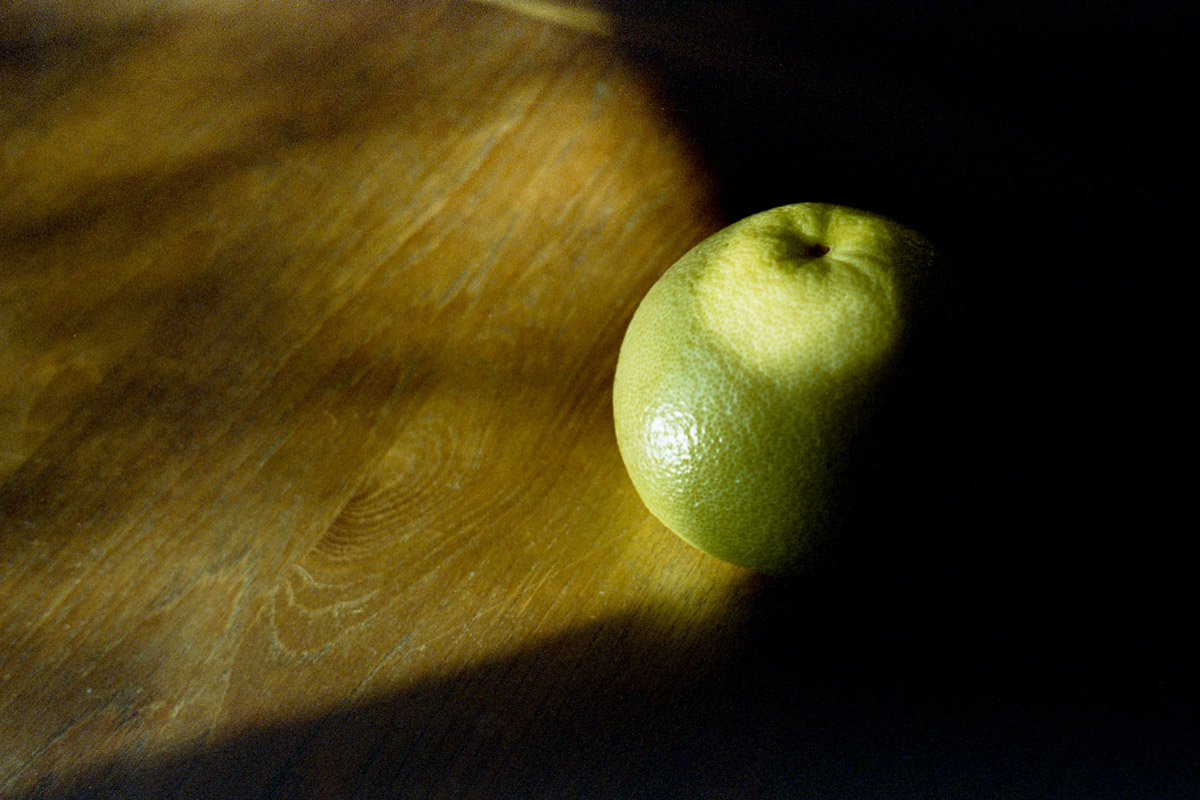
I put it under lights I exposed it to lots of daylight after taking darker images so if there was a leak it would be obvious. So far so good with this one and I have another roll yet to develop just to be sure because this is one of those cameras that everyone that shoots film should have.
The Leaker
The Light Tight?
UPDATE They both leak light! With ISO 400 film and bright conditions they seem to both have leaks. Well that’s frustrating. It may be coming through around the lens. I have a third Epic that is a champagne DLX that I am going to give a try. I would really like to take an Epic on an upcoming trip.

And finally third times a charm: The Champagne coloured Epic DLX doesn’t leak light!
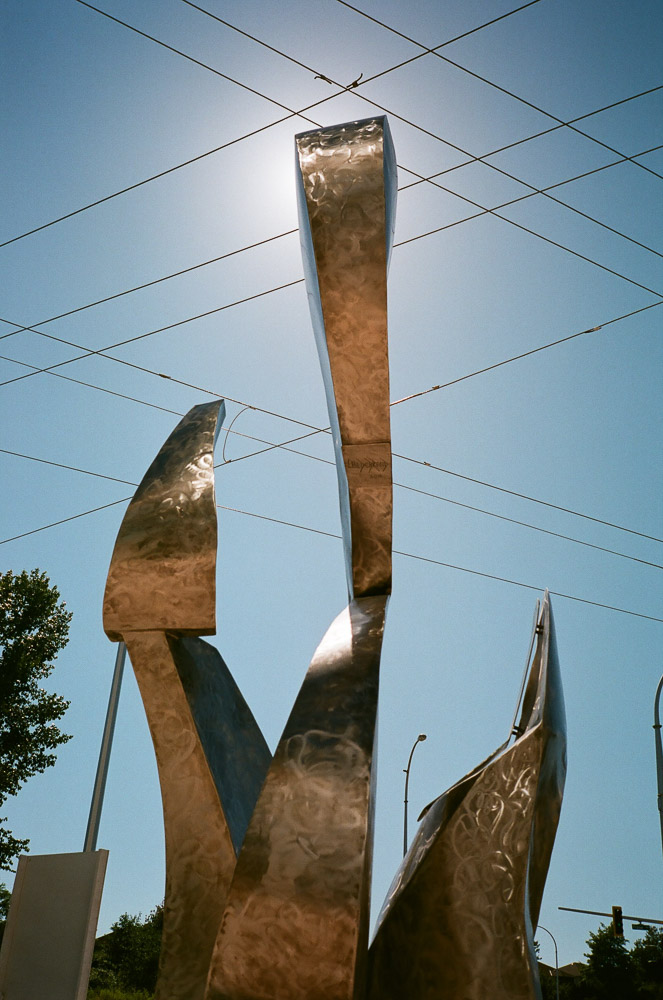
no comments | posted in Cameras, Photography
Jul
23
2016
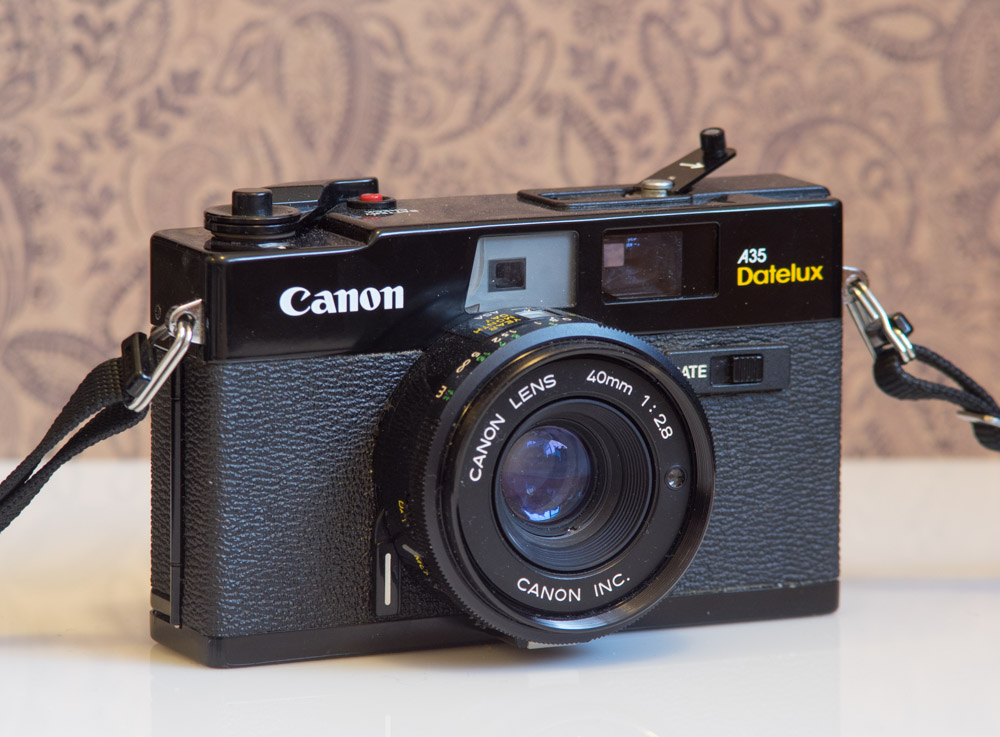 The A35 Datelux is pretty much the same as a Canon A35F but with a date function. The camera was the first Canon camera to incorporate a built in flash and their last rangefinder if you include the A35F. This was 1977 and the small fixed lens cameras like the Sure Shot that followed incorporated autofocus and motor advance rapidly bringing to an end the small fixed lens rangefinders. The exposure system of the A35 Datelux is automatic unless you use flash where you can then set the aperture but forgo the exposure system and default to a 1/60sec shutter speed.
The A35 Datelux is pretty much the same as a Canon A35F but with a date function. The camera was the first Canon camera to incorporate a built in flash and their last rangefinder if you include the A35F. This was 1977 and the small fixed lens cameras like the Sure Shot that followed incorporated autofocus and motor advance rapidly bringing to an end the small fixed lens rangefinders. The exposure system of the A35 Datelux is automatic unless you use flash where you can then set the aperture but forgo the exposure system and default to a 1/60sec shutter speed.
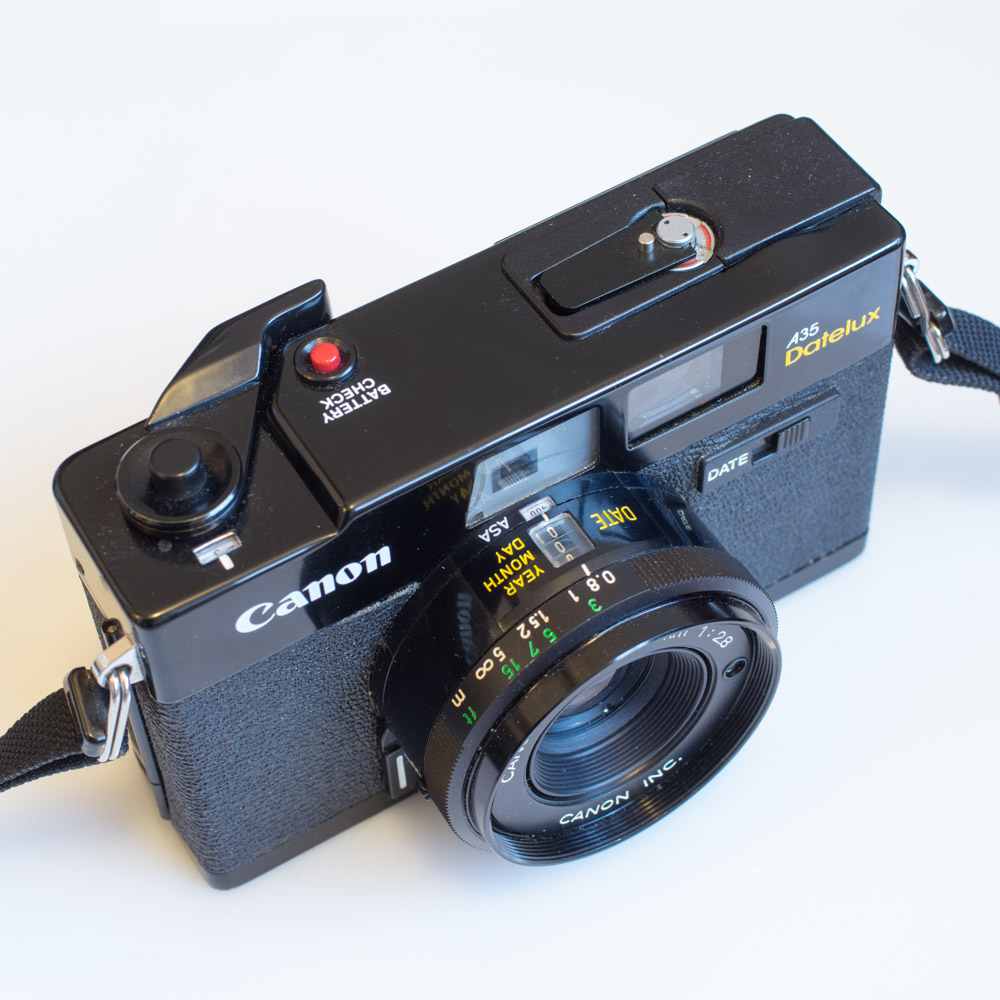
The lens is a 40mm f2.8 with 5 elements in 4 groups very likely the same or similar to that of the Canonet. The shutter is limited to a maximum of 1/320 of a second which is quite restricting although it can stop down to f22. The Date function is a very analog affair you set it by turning dials on the lens and rather than being a LED system it is a tiny light projected through a mask onto the film.
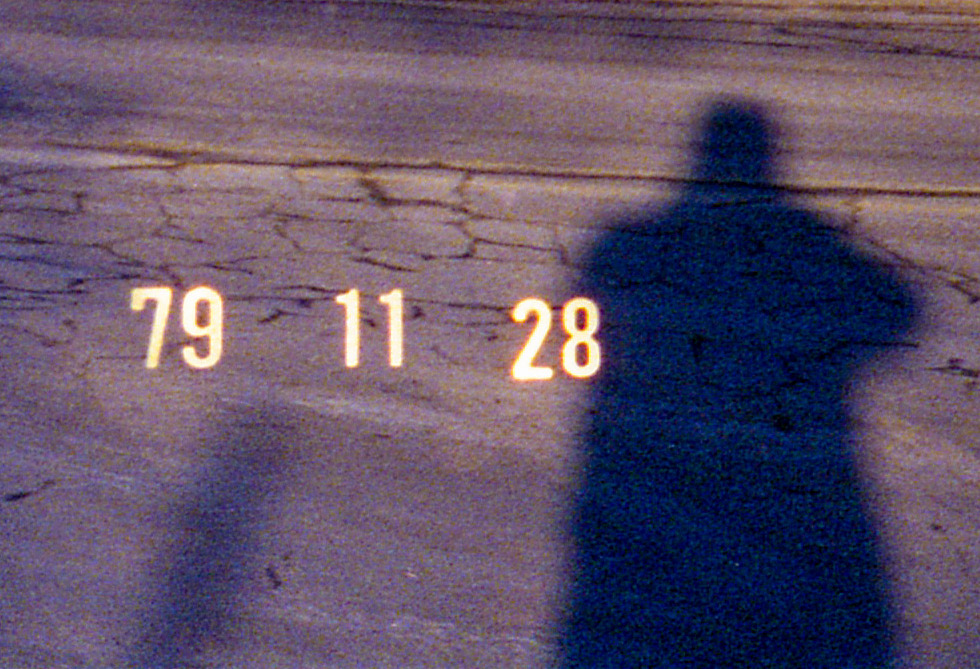
The viewfinder shows the aperture on the right hand side as well as the date function when it’s enabled. The meter is always on so a lens cap is a good idea to preserve the batteries.
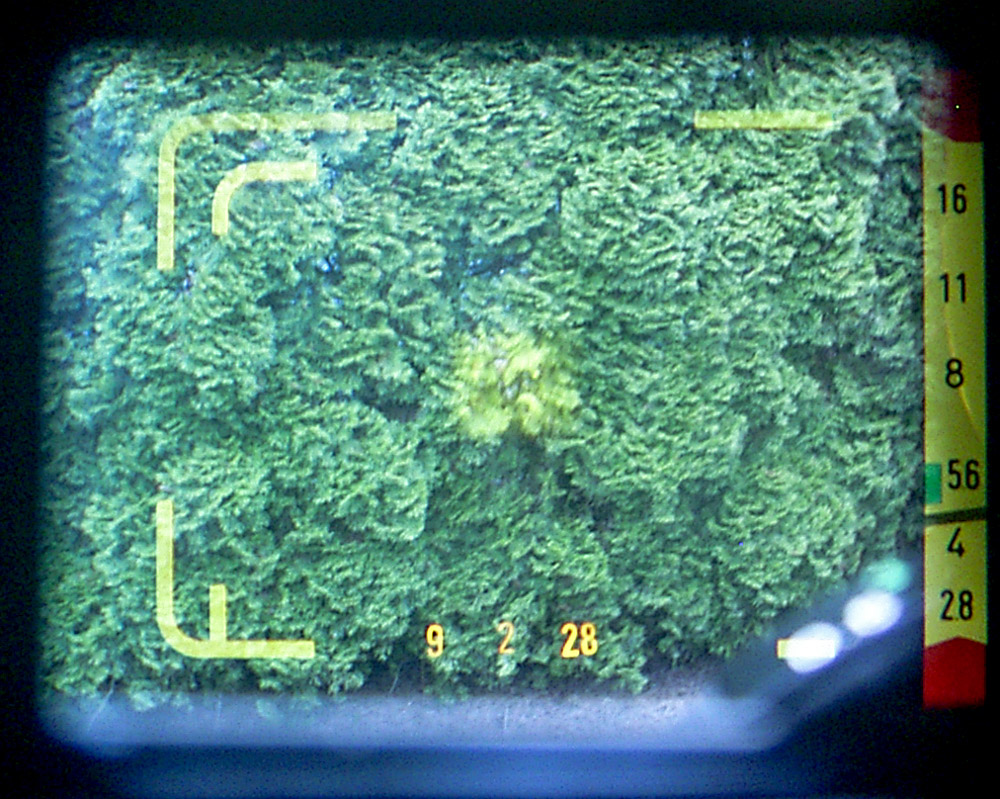
A feature of this camera that I don’t like is that it locks the shutter if there is insufficient light, I want to be the judge of that thank you. And with a slow shutter speed of 1/60 second its easy to find yourself in a situation where the camera wont take a picture without turning the flash on. When you do have the flash turned on though the camera selects the aperture based on the focus distance which is handy.
This camera is not going to be as desirable as a QL17 or similar but as a footnote in the camera world it marks an interesting transition point, certainly for Canon.
2 comments | posted in Cameras, Photography
Jul
15
2016
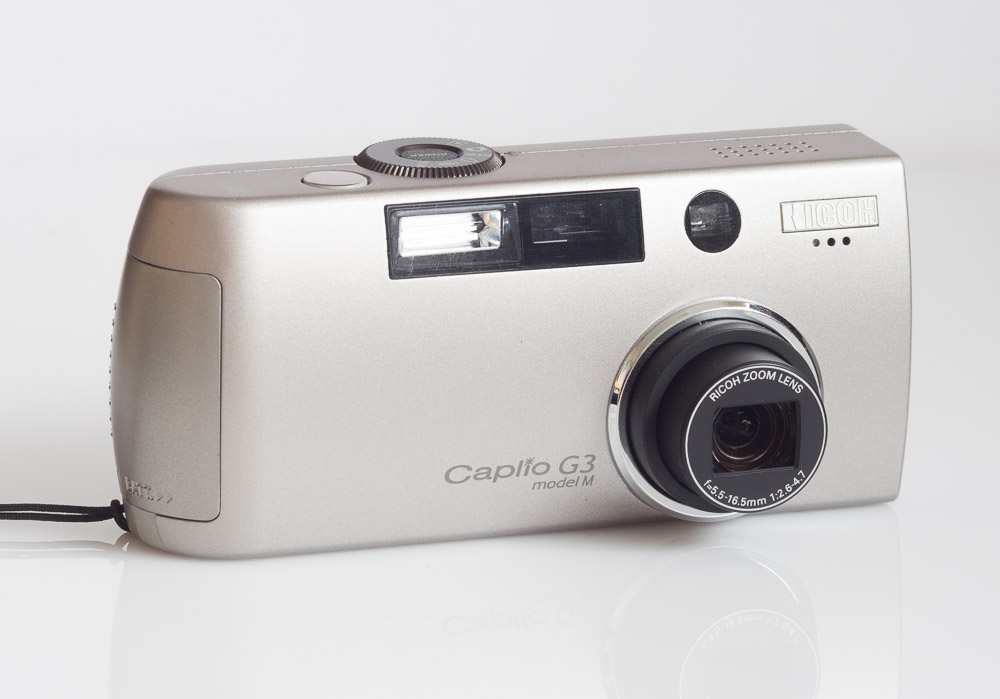
I picked up this camera recently, some 13 years after its release, not because it is relevant as a photographic tool any longer but because it is not. It has a somewhat odd appearance with its lens, screen and viewfinder off to one side, this actually makes for very good one handed operation. This is further aided by its rounded side that makes holding it very comfortable all be it for right handed operation.

Architect and industrial designer Masayuki Kurokawa had a hand in the design according to Ricoh so its not surprising that it is not like other cameras from that time.
“Renowned architect and industrial designer Masayuki Kurokawa, in collaboration with in-house designers at Ricoh, developed the Caplio G3 model S’s unique shape from close observations on how we hold objects such as pens, soda cans, and regular 35mm cameras. The result is a remarkably stylish digital camera that’s been carefully sculpted to fit comfortably in the hand of the user.” – Ricoh
It really is a nice camera to hold. Even from Ricoh’s own marketing material its hard to decipher which of the three variants is made from what material. It appears that the Caplio G3 shell is made from plastic and so is the Model M (Maybe). And then there is the model S which is made from die cast magnesium and weighs 15 grams more.
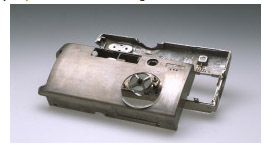
What the difference is between the G3 and the Model M is not very clear but my Model M does not seem to be made from plastic except for the battery door. The fact that it uses two AA batteries means that unlike many models with preparatory batteries I should be able to power it up years from now for that nostalgic turn of the century feel.
Aside from the design the other major claim Ricoh made at the time was that it had the shortest shutter lag of any camera at the time at 0.14 seconds this is of course if you pre focus and don’t mind that the rest of the operation around the image capture is slow. The speed of operation of digital cameras has improved considerably since 2003 and it makes for a much better photographic experience. Another area of improvement is the rear screens. The 1.6 inch 80,000 dot display on the back of this camera is almost comical by todays standards.
The lens is made from 6 glass elements in 5 groups and provides focal length of 35-105mm (35mm equivalent). ISO is limited to 125/200/400/800 which is probably a good thing with its 1/2.7inch CCD
One more area where this camera actually makes itself useful is for macro photography. Set at its widest 35mm (equivalent) focal length you can take pictures from as close as 1cm and at its telephoto end it drops to 16cm. Because the 3mpixel files are only 2048×1536 I thought I would post them in full resolution for the fun of it. The Last three images are at the maximum ISO of 800 in case you get nostalgic for 2003 enjoy.
no comments | posted in Cameras, Photography
 It’s film cameras like this that produced the dreadful images that put many people off photography or drove them to buy expensive terrible early digital cameras. The notion of having a lens that covers 38-170mm sounds good but there are a few reasons that it isn’t. The maximum aperture of the lens is f5.6 at the wide end and f12.8 at the telephoto end, neither gathers much light. Couple that with the fact the maximum shutter speed was a paltry 1/250 second and its almost a guarantee that blurry images were going to result. But lets say you use some good technique and you do manage to get a blur free image there is still the fact that there is a boat load of chromatic aberrations (ie colour fringing) you’ll be waist deep in vignetting and only the center of the image is sharp. And by sharp I mean butter knife sharp not tack sharp. So why bother using this camera 15 years later? Good question, I suppose I too was lured in with the promise of a 4.5x zoom, thinking won’t that be fun, it wasn’t. So if you see one of these languishing in a thrift store bin its better to walk away and save your film for a more worthy camera. It’s hard to believe but there are a few 35mm film point and shoot cameras that attempted even longer telephoto zoom maybe I should try them.
It’s film cameras like this that produced the dreadful images that put many people off photography or drove them to buy expensive terrible early digital cameras. The notion of having a lens that covers 38-170mm sounds good but there are a few reasons that it isn’t. The maximum aperture of the lens is f5.6 at the wide end and f12.8 at the telephoto end, neither gathers much light. Couple that with the fact the maximum shutter speed was a paltry 1/250 second and its almost a guarantee that blurry images were going to result. But lets say you use some good technique and you do manage to get a blur free image there is still the fact that there is a boat load of chromatic aberrations (ie colour fringing) you’ll be waist deep in vignetting and only the center of the image is sharp. And by sharp I mean butter knife sharp not tack sharp. So why bother using this camera 15 years later? Good question, I suppose I too was lured in with the promise of a 4.5x zoom, thinking won’t that be fun, it wasn’t. So if you see one of these languishing in a thrift store bin its better to walk away and save your film for a more worthy camera. It’s hard to believe but there are a few 35mm film point and shoot cameras that attempted even longer telephoto zoom maybe I should try them.

